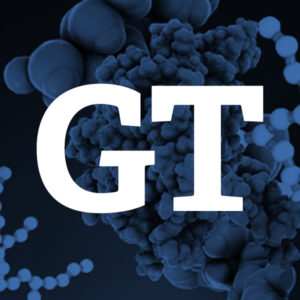In his 2014 blog, “Why We Care About Glycosyltransferases” Michael Curtin, Promega Global Product Manager for Cell Signaling, wrote:
“Glycobiology is the study of carbohydrates and their role in biology. Glycans, defined as ‘compounds consisting of a large number of monosaccharides linked glycosidically’ are present in all living cells; They coat cell membranes and are integral components of cell walls. They play diverse roles, including critical functions in cell signaling, molecular recognition, immunity and inflammation. They are the cell-surface molecules that define the ABO blood groups and must be taken into consideration to ensure successful blood transfusions.
The process by which a sugar moiety is attached to a biological compound is referred to as glycosylation. Protein glycosylation is a form of post-translational modification, which is important for many biological processes and often serves as an analog switch that modulates protein activity. The class of enzymes responsible for transferring the sugar moiety onto proteins is called a glycosyltransferase (GT).”
Glycosyltransferases: Why We Still Care
While the definition of glycosylation has not changed in the three years since Mike’s blog, the ability to study glycosylation via rapid and simple glycosytransferase activity assays, has.
In their poster, Detecting Glycosyltransferase Activities with Universal Bioluminescent Assays“, Hicham Zegzouti, et al. demonstrate new assays for detection of UDP, GDP, UMP and CMP nucleotide sugars. They describe the assays this way:
“Glycosylating enzymes use nucleotide-sugars as substrates (e.g., UDP-Gal, GDP-Fuc and CMP-Sialic acid), and in a glycosyltransferase reaction, the nucleotide moiety is released as a product after sugar transfer. Therefore, an assay that detects the nucleotide molecule could be generically used to assess all glycosyltransferase activities in vitro.”
The Need for an Improved GT Assay
In the poster, Dr. Zegzouti explains that while there are assays for glycosyltransferase activity, the traditional assays are not amenable to rapid detection nor are they usable for high-throughput screening. In addition, traditional GT activity assays require use of radioactive labels for detection. His team has developed three bioluminescent assays for measuring GT activities based on UDP, GDP, UMP and CMP quantitation, as shown in the poster schematic.
Powerful GT Activity Monitoring
While a spoiler alert may be in order here, I want to share a few additional highlights about UDP, GDP and UMP/CMP assays. As the poster notes, these assays are exciting options for testing for GT activity because:
- The assays are linear and sensitive to 25-50μM, with a stable, bright signal due to the power of bioluminescence.
- These assays are universal, providing the ability to assay most glycosyltransferases.
- Assays can also be used in screening for GT inhibitors.
In addition to the poster, you can find more information on the product page for the GDP-Glo Assay or UMP-/CMP-Glo Assay.
In Conclusion
These nucleotide detection assays (UDP-Glo, GDP-Glo and UMP/CMP-Glo) enable the investigation of a large number of GTs with potentially significant impact on diverse areas of glycobiology research. Read the poster and check out the product page links to see data and learn more.
